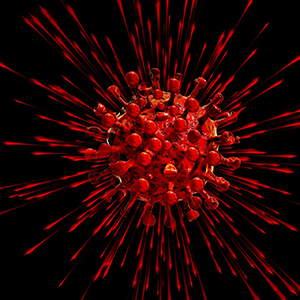Post severe COVID-19 infection lung damages study. The experience of early three months multidisciplinary follow-up

Submitted: November 4, 2021
Accepted: December 16, 2021
Published: January 19, 2022
Accepted: December 16, 2021
Abstract Views: 1611
PDF: 652
Supplementary: 208
Supplementary: 208
Publisher's note
All claims expressed in this article are solely those of the authors and do not necessarily represent those of their affiliated organizations, or those of the publisher, the editors and the reviewers. Any product that may be evaluated in this article or claim that may be made by its manufacturer is not guaranteed or endorsed by the publisher.
All claims expressed in this article are solely those of the authors and do not necessarily represent those of their affiliated organizations, or those of the publisher, the editors and the reviewers. Any product that may be evaluated in this article or claim that may be made by its manufacturer is not guaranteed or endorsed by the publisher.
Similar Articles
- Mario Tamburrini, Dipesh Maskey, Nirupam Sharan, T.K. Jayalakshmi, Umberto Zuccon, Giuseppe Deda, Convex probe endobronchial ultrasound guided transbronchial/transoesophageal fine needle aspiration (C-EBUS-TBNA/EUS-B FNA) of pleural lesions: A single center experience and review of literature , Monaldi Archives for Chest Disease: Vol. 90 No. 3 (2020)
- Nitish Aggarwal, Tarun Krishna Boppana, Saurabh Mittal, COVID-19 pandemic: The testing times for healthcare workers , Monaldi Archives for Chest Disease: Vol. 91 No. 1 (2021)
- Vera Auchynka, Ajay M.V. Kumar, Hennadz Hurevich, Yuliia Sereda, Varvara Solodovnikova, Dzmitry Katovich, Svetlana Setkina, Askar Yedilbayev, Aliaksandr Skrahin, Alena Skrahina, Effectiveness and cardiovascular safety of delamanid-containing regimens in adults with multidrug-resistant or extensively drug-resistant tuberculosis: A nationwide cohort study from Belarus, 2016-18 , Monaldi Archives for Chest Disease: Vol. 91 No. 1 (2021)
- Emmanouil Panagiotou, Ioannis Vamvakaris, Nikolaos K. Syrigos, Elias Kotteas, Pulmonary benign metastasizing leiomyoma: a case report , Monaldi Archives for Chest Disease: Vol. 94 No. 1 (2024)
- Gennaro Ratti, Cinzia Monda, Federica Ratti, Marco Golino, Ludovica Fulgione, Cosimo Fulgione, Mario Mallardo, Paolo Tammaro, Long-term dual antiplatelet therapy and nuisance bleeding: impact on quality of life , Monaldi Archives for Chest Disease: Vol. 93 No. 4 (2023)
- Catarina Amaral Marques, André Cabrita, Paulo Araújo, Tânia Proença, Ricardo Pinto, Miguel Carvalho, Catarina Costa, Ana Amador, João Calvão, Cristina Cruz, Acute myocardial infarction during late COVID-19 era: patient characteristics, presentation and outcomes , Monaldi Archives for Chest Disease: Vol. 93 No. 4 (2023)
- Fatemeh Khelghati, Fatemeh Nasirpour Seilakhori, Mehdi Goudarzi, Shima Malekloo, Amir Hashem Shahidi Bonjar, Hossein Goudarzi, Mohammad Javad Nasiri, Multidrug-resistant tuberculosis in Iran: a multicenter study , Monaldi Archives for Chest Disease: Early Access
- Sunil Mahavar, Princy Tyagi, Abhishek Agrawal, Sudhir Bhandari, Subrata Banerjee, Raman Sharma, Prakash Keshwani, Clinical and epidemiological profile of Indian COVID-19 patients from Jaipur: a descriptive study , Monaldi Archives for Chest Disease: Vol. 91 No. 2 (2021)
- Vinay V, Sushil Kumar Munjal, Sandeep Jain, Yasir Abdullah V, Arunachalam M, Srinath Shankar Iyer, To investigate the knowledge, attitude and practices regarding tuberculosis case notification among public and private doctors practicing of modern medicine in South Delhi , Monaldi Archives for Chest Disease: Vol. 93 No. 2 (2023)
- Mariana Gomes Tinoco, Margarida Castro, Luísa Pinheiro, Tamara Pereira, Margarida Oliveira, Sílvia Ribeiro, Nuno Ferreira, Olga Azevedo, António Lourenço, “Hot phase” clinical presentation of biventricular arrhythmogenic cardiomyopathy: when the perfect electrical storm spontaneously stops , Monaldi Archives for Chest Disease: Early Access
<< < 69 70 71 72 73 74 75 76 77 78 > >>
You may also start an advanced similarity search for this article.

 https://doi.org/10.4081/monaldi.2022.2142
https://doi.org/10.4081/monaldi.2022.2142





